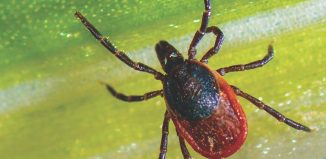Parkinson’s disease: What you need to know
Eye tremor may be an early indication of this neurodegenerative condition
Eye tremor may be an early indication Parkinson’s disease is a neurodegenerative disease, which means there is progressive breakdown of neurons. Traditional medications that focus on dopamine levels and receptors help improve symptoms, sometimes dramatically, yet they have limitations. Medications can’t prevent the breakdown of the neurons themselves. Also, drug benefits may eventually “wear off.”
Parkinson’s typically affects people who are older than 60. There are over one million people in North America directly affected by this disease, but countless family member caregivers are indirectly affected as well (N Engl J Med 1998;339(15):1044).
This article’s focus is to provide an overview of Parkinson’s, including risk factors, diagnosis and alternative treatments that may enhance traditional treatments.
Significance of eye tremors
The common triad of symptoms for diagnosing Parkinson’s are rigidity, tremor and bradykinesia (slow gait). Parkinson’s tremors typically occur in the limbs, but this may not be the whole story. We may also want to look at the eyes. It appears that Parkinson’s disease patients have ocular fixation instability, meaning that when they focus on a point on a computer screen, their eyes oscillate and may have trouble focusing. This happens to a greater degree in the vertical direction than the horizontal (Arch Neurol. 2012;69(8):1011-1017).
In this case-control trial, which compared Parkinson’s patients with healthy participants, 63 percent of the Parkinson’s patients, in addition to eye tremors, experienced difficulty with vision at some point during the testing. The eye area affected was the fovea — part of the retina (back of the eye) responsible for sharp central vision. The authors believe that eye testing may provide an accurate way to diagnose the disease.
Role of pesticides
It appears in meta-analysis (a group of 46 trials) that pesticides increase the risk of Parkinson’s disease (Environ Health Perspect. 2012;120(3):340-347). Insecticides and herbicides appeared to have more impact, whereas fungicides were not associated with increased risk.
The studies were not completely consistent, even though there was a 62 percent overall increased risk. However, it would be premature to declare that pesticides are definitely associated with Parkinson’s disease. There were no randomized clinical trials, and there were several different types of trials analyzed. Many past studies have had mixed results. Also, it was unclear what type of pesticide exposure occurred and at what level. The authors did not definitively say that it was from consumption of foods, but the results are interesting and may give a boost to the validity of organic foods.
Dairy’s potential negative impact
The National Dairy Council wants you to believe that dairy makes you big and strong. However, in the prospective (forward-looking) Cancer Prevention Study II, men who consumed the most dairy were found to have as much as an 80 percent increased Parkinson’s disease risk compared to those who consumed the least (Am J Epidemiol. 2007 May 1;165(9):998-1006).The risk is higher than the pesticide study mentioned above. There was also an increased risk with women, but not as dramatic. When results combined both sexes, there was an overall 60 percent increased risk. Therefore, if there is a family history of Parkinson’s, it might be wise to consider keeping dairy to a minimum.
Dietary effect
In a meta-analysis that looked at the Nurses’ Health Study and the Health Professionals Follow-up Study, results showed diets that focused on fruit, vegetables, whole grain, nuts and seeds, fish and poultry demonstrated a 30 percent reduction in Parkinson’s disease risk (Am J Clin Nutr. 2007 Nov;86(5):1486-94). This effect may be due to flavonoids, bioactive compounds in plant-rich diets. It is surmised that these compounds may have neuroprotective effects, because of their antioxidant and anti-inflammatory properties (Eur J Pharmacol. 2006;545(1):51-64).
Exercise and Parkinson’s treatment
Exercise may be used in concert with therapeutics in treating Parkinson’s disease, and goes beyond medications in helping with motor function and stability. Two that have shown good results are resistance training and tai chi.
Resistance training — specifically weight training — may have significant benefits, according to preliminary data (AAN 2012 abstract #S02.003). The patients involved in the study had Parkinson’s for a mean of seven years and were not on medication. They exercised twice a week for one hour, and they saw a significant improvement in motor function as they gradually increased the level of resistance. This was sustained for the 24-month study. Though this study was small, these results are encouraging.
Postural stability is important to the functionality of a Parkinson’s disease patient. In an NIH-funded randomized clinical trial, the gold standard of trials, tai chi significantly improved postural stability when comparing it to both resistance training and stretching (N Engl J Med 2012;366:511-519). Tai chi was instrumental also in reducing falls — even three months after patients stopped tai chi. The mild to moderate Parkinson’s patients in the study performed tai chi for one hour twice a week.
It is exciting that there may be a more definitive way to diagnose Parkinson’s disease by testing the eyes for tremors, rather than the traditional compilation of symptoms. Even though it is not clear where pesticide exposure occurred, it may be prudent for people with a high risk of Parkinson’s to lean toward an organic, plant-rich diet for prevention.
In addition, if a Parkinson’s disease patient exercised four times a week, alternating between tai chi and resistance training, they would get the best of both worlds: potential improvement in postural stability and in motor skills.
Dr. Dunaief is a speaker, author and local lifestyle medicine physician focusing on the integration of medicine, nutrition, fitness and stress management. For further information, go to the website www.medicalcompassmd.com and/or consult your personal physician.






